Photographs: Danish Siddiqui/Reuters Amberish K Diwanji
Borrowed development policies and the colonised mind of Indians are to be blamed for the rupee’s massive fall, says Professor Arun Kumar, bottom, left, who holds the Sukhamoy Chakravarty Chair at the Centre for Economic Studies and Planning, Jawaharlal Nehru University.
Professor Kumar, who is a strong critic of the government and the Reserve Bank of India over the economic problems, speaks on the plight of the rupee and the nation in this interview with Amberish K Diwanji.
The rup ee has fallen dramatically over the last few weeks. Any one particular reason that you would say is behind this fall?
ee has fallen dramatically over the last few weeks. Any one particular reason that you would say is behind this fall?
The most obvious one is that foreign investors and Indian businessmen have lost confidence in the economy. This has led to the expectations of a declining value of the rupee. Since the currency markets are notoriously speculative, there is speculation on the decline in the value of the rupee.
Often expectations are self-fulfilling in a speculative market and that is why the rupee has been falling rapidly since May 2013. Over the last two years it has fallen from its peak value of around Rs 44 to the dollar.
The consequence of these self-fulfilling expectations is that there is withdrawal of funds from India by, say, the foreign institutional investors and non-resident Indians.
They feel it is better to withdraw funds before the value of the rupee declines any more. Further, the exporters are delaying bringing back the proceeds of their sales abroad so as to make more money and the importers are importing more immediately so that they can take advantage of the cheaper rupee at this point of time.
Finally, to take capital out, there is greater under-invoicing of exports and over invoicing of imports. All this is resulting in an increase in the trade and the current account deficits in the balance of payments which then justifies the fall in the value of the rupee.
...
Borrowed policies, colonised mind cause of economic mess
Image: Employees stand in a lobby as they wait for the elevator inside Bombay Stock Exchange.Photographs: Danish Siddiqui/Reuters
The RBI has tried to stem the fall, but in vain. Was the RBI right in seeking to defend the rupee or should we let market forces decide the currency’s value?
The RBI’s steps may be characterised as ‘too little, too late’. It should have defended the rupee much earlier rather than when it has fallen below Rs 60 to the dollar. The market forces in a speculative situation are destabilising so there is no market determined value of the rupee.
When the rupee fell from Rs 47 to below Rs 50 only then the RBI should have intervened. This would have prevented expectations of a further fall from building.
The RBI has had a kitty of $280 billion in its reserves. It is true that this is based on borrowings of $380 billion. However, early intervention would have required small amounts of release while now it would require massive releases to correct the situation.
The RBI has been trying inflation control while in India inflation is not strictly a monetary phenomenon. It should have lowered interest rates to help spur growth.
Inflation control in India requires supply side responses and a political will to stop speculative activities and to check the growing black economy. Black liquidity rushes in to speculate so any tightening of money supply by the RBI is undone by the funds from the black economy.
...
Borrowed policies, colonised mind cause of economic mess
Image: A broker monitors share prices while trading at a firm in Mumbai.Photographs: Danish Siddiqui/Reuters
Could the RBI and the government have done anything to stem the fall? Will the recent move at tightening capital account help the rupee?
The RBI by itself cannot control the value of the rupee. Both fiscal and monetary policy instruments have to be used. The government has correctly set into motion steps to address the trade and current account deficits in balance of payments by curbing the inflow of inessentials, such as gold.
While it is true that smuggling of gold may revive but overall the demand for gold would moderate and the outflow of foreign exchange on this account would moderate. It needs to be remembered that the inflow of gold increased from 160 tonnes per annum in 1992 to the current level of about 900 to 1,000 tonnes after liberalisation of the import of gold in 1992. This has led to a massive out flow of foreign exchange.
Capital account restrictions are important since they stem the outflow of capital and foreign exchange. However, the government’s steps are half-hearted and leave many channels for the outflow to continue. It needs to be remembered that in the 1997 contagion in the South East Asian Tiger economies only Malaysia emerged unscathed because it imposed capital account controls. The IMF was critical of Malaysia at that time but later praised it for the management of the economy.
The government also needs to lower the fiscal deficit in its budget by raising more resources and investing more on the plan account (rather than cutting it). It has been lowering plan expenditures in the last few years by a whopping Rs 1 lakh crore (Rs 1 trillion) each year.
This has resulted in lower demand in the economy and a slowing economy. In a period when the private corporate sector is not investing enough, the cut in the plan expenditures has resulted in a fall in the investment rate of the economy from its peak in 2007-08 and that has adversely affected growth in the economy.
More resources can be raised by lowering the 'tax expenditures' in the budget which are running at about Rs 5.5 lakh crore (Rs 5.5 trillion). Further, a moderate dent on the black economy of 50 per cent of GDP can raise the additional funds required for maintaining the plan expenditures budgeted for.
...
Borrowed policies, colonised mind cause of economic mess
Image: A cashier counts rupee notes inside a bank in Mumbai.Photographs: Danish Siddiqui/Reuters
You have criticised India’s development model. Can you elaborate?
Finally, the investment model adopted by India is based on crony capitalism (more so after 1991) and this has collapsed since 2008 when major scams were unearthed and the public started reacting. Since then the politicians and the bureaucracy have become wary. Businessmen have also suffered with cancellation of licences, so they too are wary.
Further, the public has lost trust in big projects that lead to massive displacement while the rich and the politicians make money. Thus resistance has built up to all major projects, such as power plants, special economic zones, steel plants and mining projects. All these have stalled and there are cases of withdrawal of projects like, Arcelormittal and Posco.
There is a need for transparent and market-based investment in which the public can have confidence and where these projects appear to be in the national interest and not just to fill the pockets of the rich and the powerful. Such a model of investment has not emerged and that is why investment is suffering in the country.
Unfortunately, given the political uncertainty due to the weakness of the present government and the impending state and national elections and the uncertainty of who will come to power, private investors are holding back investments. This is not likely to change any time soon.
...
Borrowed policies, colonised mind cause of economic mess
Image: RBI headquarters in Mumbai.Photographs: Vivek Prakash/Reuters
Where do you see the rupee vis-a-vis the dollar at the end of the year?
There is no way to predict the value of the rupee even a few months down the line. If the government can successfully reverse expectations, the rupee can strengthen and go back to Rs 55 to the dollar but if not it could breach the Rs 70 mark. The latter appears more likely at present given the uncertainties and the lack of confidence in the economy.
How will the rupee fall impact the economy? For example, petrol prices will go up, and this might push up inflation even as growth remains stagnant. Are we back to the “stagflation” days?
The fall in the value of the rupee will result in the prices of all goods with import content to rise in price. Immediately the price of energy (petroleum products and coal) would rise and since this is used in all production all prices would tend to rise. Electricity, petrol, diesel, gas prices will rise. Energy is required for transportation so all goods will rise in price due to higher transport costs.
All electronics goods, automobiles, etc, with high import component will see a price rise. Internal tourism will be adversely affected because of its import intensive character but foreign visitors may increase in number with the weakening rupee.
In India, growth is not stagnant but it is still at around five per cent per annum which is better than what the IMF prediction for the world economy is. Thus, Indian economy’s rate of growth remains better than the world average and this cannot be called stagnation. The rate of growth will fall as inflation rate rises. Employment generation, which is a big concern for India, will fall further and lead to persistence of poverty and more crime among the unemployed youth.
Exports will do better over time as the prices of Indian goods decline and this would help the growth of some sectors like, software, call centres, textiles and leather goods. However, the rise in exports will not be able to compensate for the decline in internal demand due to inflation. Hence the rate of growth would tend to fall unless other steps are taken.
...
Borrowed policies, colonised mind cause of economic mess
Image: A vendor waits for customers at his stall at a wholesale food market in Mumbai.Photographs: Vivek Prakash/Reuters
Moving to the general economy, how much of the blame for the economic downturn can be blamed on external factors, and how much with the current government’s ineptitude?
We are facing major macro economic imbalances in the economy. On the external front, the current account deficit in balance of payments is also a result of the slow growth in the major world economies -- the US, Eurozone, China and so on. That is why the growth rate in exports has fallen while imports continued to surge due to import of energy and gold (prices of both of which rose or remained high).
Now with the improvement in growth in the US and Eurozone, while Indian economy is weakening, capital has begun to go out, leading to a decline in the value of the rupee.
Finally, the fear of tapering off of the quantitative easing by the Federal Reserve has made many believe that days of easy money are numbered and capital flows to emerging markets are set to fall. This has created the expectation that the currencies of emerging markets will decline in value and that is what is happening.
On the internal front, the high rate of persisting inflation, high fiscal deficit (kept in control by cutting plan expenditures) and falling rate of growth (especially in industry) reflect deep macro imbalances.
The internal and external factors have dented the confidence in the Indian economy and led to credit rating agencies repeatedly threatening a downgrade. Even though the performance of these agencies was not creditable during the crisis starting 2007, their actions are still influential with investors.
Along with these factors one can add the `policy paralysis’ of the present government since 2009 due to the surfacing of the various scams. The government has been busy warding off pressures due to these exposes rather than setting new directions in policy. Now with elections round the corner, investors will wait and watch and the government will have to get more proactive in encouraging growth through its actions.
...
Borrowed policies, colonised mind cause of economic mess
Image: A fruit vendor speaks on his phone while sitting at his fruit stall at a wholesale market in Mumbai.Photographs: Vivek Prakash/Reuters
You have written that the problems we face are because are following a “borrowed development model”? But many would argue that 22 years of liberalisation has helped India far more than 44 years of State control policies ever did?
We borrowed a development model in 1947 and another one in 1991 -- both have been based on the notion of Western modernity and not what India needed. Both have been based on a top down approach and not a bottom up one. Both have depended on trickle-down to the poor. The post-1991 path has not increased growth rates as much as the pre-1991 path did.
Our average rate of growth in the period between 1950 and 1980 jumped by a factor of five as compared to that in the 50 years before independence. After 1991, the rate of growth has barely increased by 50 per cent over the average growth rate in the 1980s and that too over a few years between 2003 and 2008. We are now back to around five per cent rate of growth.
The growth in the last two decades is based on the achievements of the earlier four decades. Also, the growth rate has accelerated due to structural changes where the services sector has become dominant and the slow growing agricultural sector has become marginal to the growth story. Further, the present path is leading to massive disparities since the growth is concentrated in a narrow section of the population.
Finally, poverty is changing its characteristics so that in spite of increase in incomes of the poor, poverty is persisting in its changed forms. We are pursuing a policy of 'growth at any cost' with all costs falling on the workers and the environment. The cost of a deteriorating environment is borne disproportionately by the poor who live in poor conditions.
Studies show that the health cost of the poor have risen sharply so that their increased incomes cannot compensate for the increase in the cost of living for them.
The new policy paradigm which has led to increased consumption by the middle classes and the well-off hides a massive rise in social and political instability in the country. This has its hidden costs. Further, consumerism is the means used by the ruling class to divert the attention of the people from the real problems faced by them.
But rather than provide the solution it is creating additional problems due to the rising expectations among the youth which is bombarded with images of high consumption in TV ads, serials, films, etc.
However, there is no way that these expectations can be fulfilled since the organised sector jobs paying well are only six per cent of the total jobs. Ninety-six per cent of the 12 million children joining the work force every year will have to take up low paying jobs in the unorganised sectors and they cannot fulfill their expectations. This is leading to terrorism and crime all around.
...
Borrowed policies, colonised mind cause of economic mess
Image: A commercial building housing various corporate offices in central Mumbai.Photographs: Danish Siddiqui/Reuters
If the current development model is flawed, then what is the development model best suited for India?
One has to go for an indigenous path based on social justice and equity. This does not mean a closed economy. Development has to be from below as suggested by Mahatma Gandhi. That is what the government also now wants when it talks of inclusive growth but it lacks the will to implement such a path. Its flagship programmes are mere safety devices to take care of the problems its policies are creating.
The alternative path would target productive full employment and not just investment. It would be based on an appropriate mix of various levels of technologies. It would create conditions for decentralised urbanisation and decentralised development with autonomy devolved from the Centre to the states to the local bodies.
It would curb the black economy to release resources from the present unproductive sectors and channel them to productive activities. It would be based on protecting the environment and making everyone not only literate but also creative through high quality education to all. Such a path was spelt out in the alternative budget presented in 1994 which also showed 'how to make the desirable feasible'.

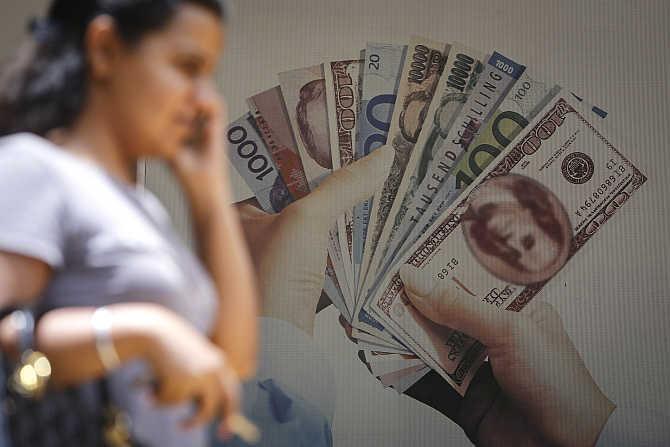

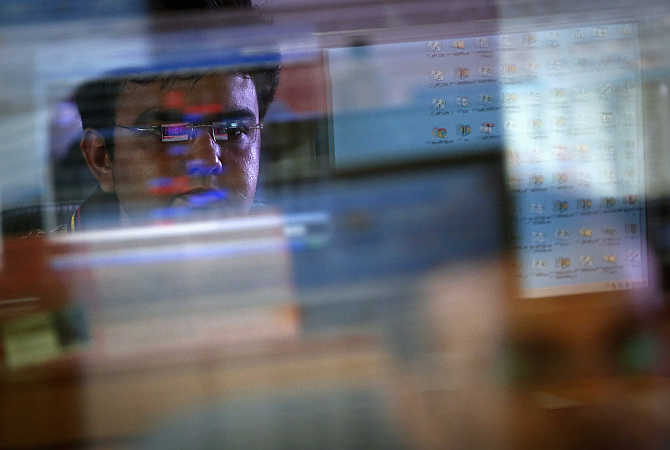

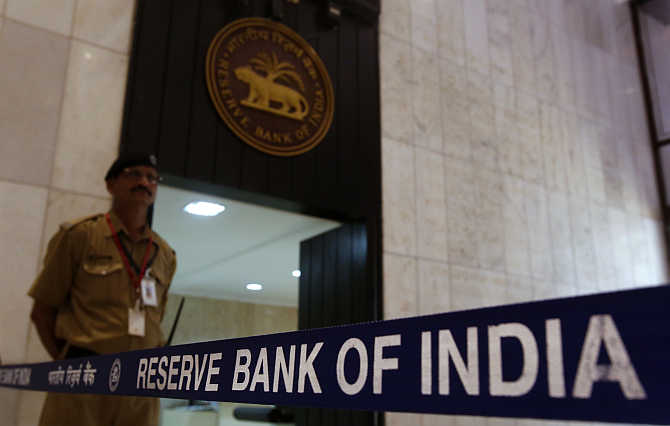
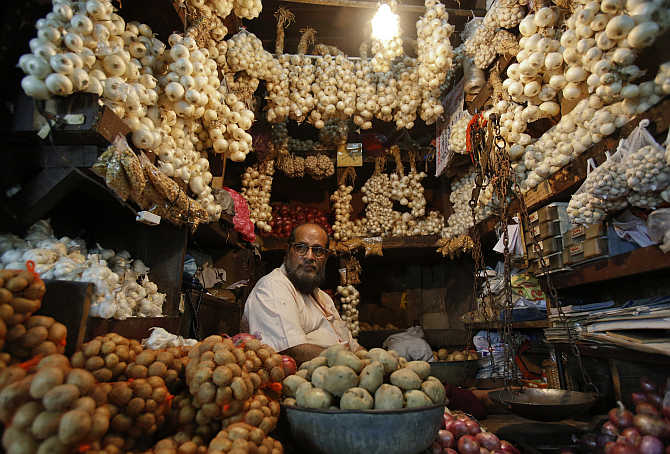

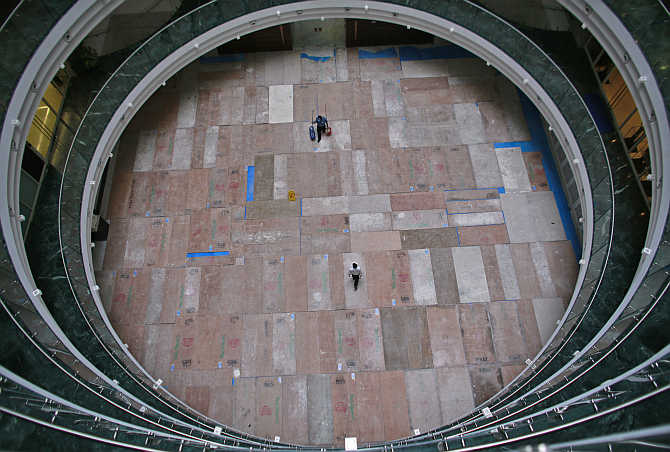
article